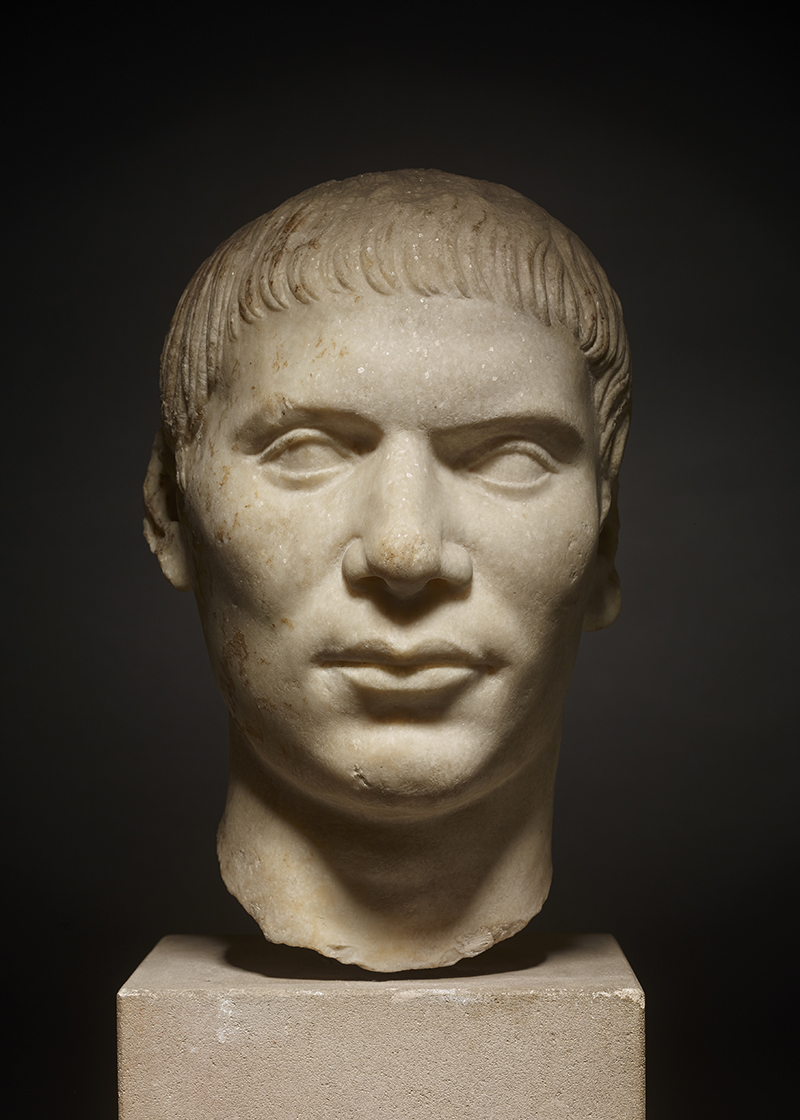Consider, for instance, this white marble head depicting a man of indistinct age. He is visualized with broad facial planes, a flattened nose, and swollen, pursed lips. His eyes are almond-shaped, deep-set, unworked, and flat. His hair is combed forward in long, comma-shaped strands that are reminiscent of portraits of the emperor Trajan. The head was said to be found in Rome, but nothing is known about its original display context there, and now it sits in the British Museum, where it is not currently on display. Similarly, it has been almost completely overlooked in the art-historical scholarship. However, the museum’s long-standing categorization of the head as a “portrait bust of a man, possibly of African origin” makes it of direct interest to the research project that I undertook at the Center: the visualization of ethnicity in Roman portraiture, with a focus on depictions of Aethiopians (from Aethiops, the term used by Romans to describe the “sun-darkened” peoples inhabiting the region south of Egypt).
There are at least two significant methodological and evidentiary hurdles to the study of ethnicity in Roman art, specifically in the medium of portraiture. The first concerns whether a visually descriptive head depicts a portrait of a historical individual or is instead a head of a generic ethnic type (a portrayal). The ancient historian and classicist Frank M. Snowden Jr. believed that “the freshness and vitality” of the images of Aethiopians, for instance, indicated that they were living contemporaries of their artists and thus that the works he discussed were portraits of Black Africans who were physically present in Rome and its territories. However, he acknowledged that only a single representation, the so-called Memnon now in the Antikensammlung in Berlin, could be identified “with some degree of certainty” as a historical person. Thus, if marble heads like the example now in London could be positively identified as portraits of individuals of Aethiopian descent (some of whom were also Roman citizens), their modes of representation could potentially inform us about how they chose to visualize themselves as participants in the imperial project. Furthermore, they would allow us to put the monolithic categories of “Roman/normative” and “Aethiopian/ethnic” into useful friction. To this end, I spent part of my fellowship compiling a database of such potential “portraits.”


